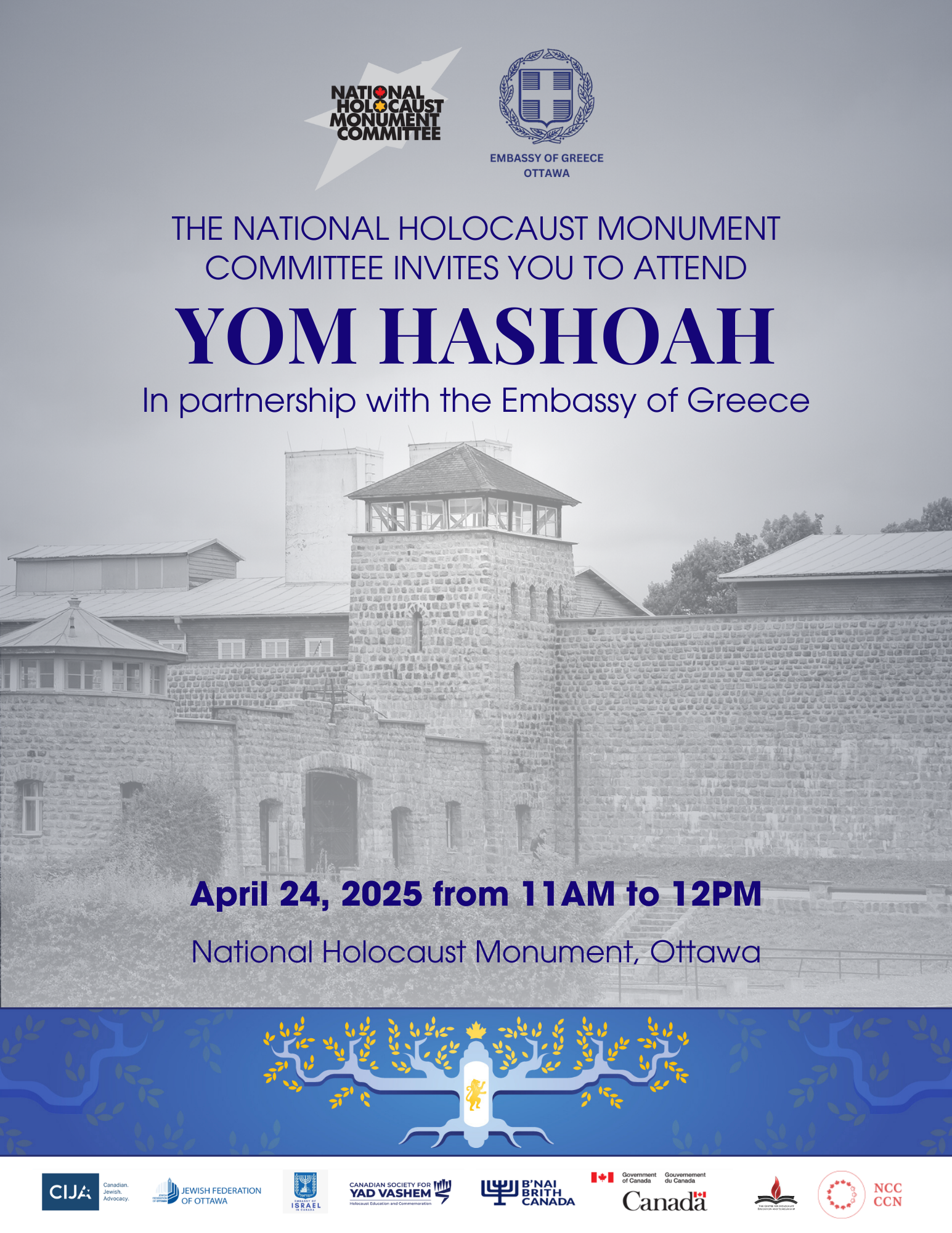
This year, the Jewish Federation of Ottawa’s Yom HaShoah commemoration will shine a light on how art can serve as a powerful form of memory. The evening program on April 23 will include a solemn candle-lighting ceremony by Holocaust survivors in honour of the six million Jews who were murdered, followed by a thoughtful discussion with artists Jacqueline Kott-Wolle and Rafael Goldchain, moderated by Hernan Tesler-Mabé, associate professor and coordinator of the Jewish Studies program at Huron University College in London, Ontario.
Centred around the theme of art as remembrance, the event explores how creative expression — through paint and photography — can help capture both the heaviness and the humanity of the Holocaust. It offers a window into the lives not only of survivors, but also of their children and grandchildren who carry forward their stories.
Kott-Wolle and Goldchain approach remembrance through different artistic mediums, yet both use personal and historical memory to shape their work. As the child of survivors, Kott-Wolle creates vibrant oil paintings based on old family photographs, preserving her family’s post-war story in a distinctly modern way. Goldchain, who grew up hearing stories of relatives who lived through the Holocaust, uses photography and self-portraiture to reimagine and honour his ancestors.
Kott-Wolle hadn’t originally set out to create Jewish-themed art. But that changed when she stumbled upon family photographs while visiting her mother.
"One day I was at my mom’s house, and I started rummaging through old photos,” she said. “I saw a painting of our rabbi from our Conservative-movement synagogue ... he didn’t look like the paintings of rabbis I grew up with, so I decided to paint him.”
As she continued exploring the photo collection, she came across an image of her uncle, a Holocaust survivor like her parents. His story of resilience, emigration, and new beginnings in Canada became the spark for a new artistic direction: translating family history into vivid, colourful paintings. The result is a body of work that redefines what Jewish art can look like — intensely personal, modern, and deeply connected to memory.
Goldchain’s work takes a different but equally compelling path. Using photography, he stages self-portraits dressed in historical clothing, bringing his ancestors and their stories to life. His interest began when he experimented with portraits of himself in Canadian and American military uniforms. Then, he discovered photography books of pre-war Jewish communities in Europe and began to see a new opportunity.
"I started collecting books of photography of Jewish communities before the Shoah," said Goldchain. "I started looking at those portraits and thinking, 'okay, the exercise is not to be a slave to history or biography, but to create.'"
In his photos, Goldchain shows that European Jews led full and vibrant lives before the Holocaust — working, celebrating, and loving like anyone else.
"I started adopting new people into my family in the past," he said. "Using the names from the internet from Jewish records and using photographs from these books as departure points, I began to create my own photographs."
This act of creation fosters a profound connection to his roots.
“When you look at a photo of a relative, especially one that is close, you are looking for your own features,” said Goldchain.
His physical resemblance to those he portrays, combined with the thoughtful captions he adds to each photo, brings the viewer into an intimate narrative — one that is both historical and deeply personal.
For both artists, creating Holocaust-related work has had an unexpected impact.
“I became ... an accidental Holocaust educator,” said Kott-Wolle. “I’ve been able to ... revive a way to keep talking about [the Holocaust] in a new way and a way that conveys resilience and optimism.”
As we enter a time when direct testimony from survivors becomes increasingly rare, the stories live on through the children and grandchildren of survivors — through their words, art, and actions.
At the upcoming Yom HaShoah commemoration, Kott-Wolle and Goldchain will join Tesler-Mabé in a conversation that highlights how memory can be preserved and reimagined through art, and how creative expression opens new doors to Holocaust education beyond the classroom.
To learn more and to register for this event, click here.

Another event to mark Yom HaShoah will occur the following day at 11:00 am at the National Holocaust Monument. It will pay tribute to the 80th anniversary of the liberation of Auschwitz-Birkenau, as well as a special presentation by the Ambassador of Greece, Her Excellency Ekaterina Dimakis. Jews in Greece saw some of the worst violence during the Holocaust, with nearly 89 to 92 per cent of all Greek Jews being murdered at Auschwitz.
To attend this event, RSVP to Annette Wildgoose at [email protected]
